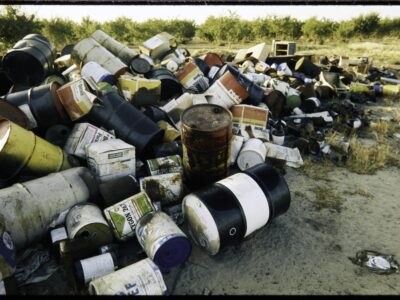The (Somewhat Puzzling) Trajectory of CERCLA Litigation
I thought it might be interesting to see the general trajectory of CERCLA litigation over the years. The figures for reported court decisions are readily available on Westlaw. (I searched for CERCLA or Superfund by year.) Part of the trajectory makes sense, but part is puzzling.
There’s a clear pattern up through 2002 that’s fairly easy to understand. CERCLA cases began slowly, with one in 1981 and 11 in 1982. The number of cases per year then builds steadily until at peak of 356 cases in 1993. After the peak, the number slowly subsides to 155 in 2002. That pattern seems to make sense for a new law that is mostly designed to fix a finite set of existing sites.
You would expect the number of cases to continue declining or maybe to stabilize at around 150 for a while. But that’s not what happened. In 2003 the number of cases began to rise again, and by 2006 the number was back up to 267. For comparison purposes, that’s higher than any year before 1991 or any prior year after 1996 or any year before 1991. The rate has remained around that level ever since, with a slight dip in 2008 but returning to 269 in 2009.
Note that the turnaround occurred during the Bush Administration after a steady decline during the second Clinton Administration, so presumably this isn’t due to a sudden increase in aggressiveness by EPA. Either something was happening from 1997-2002 to reduce the number of reported cases, or something happened after 2002 to reverse the trend.
Initially, I just searched for CERCLA over five-year periods, making the pattern even more striking. From 1985-1989, the search turned up 3163 opinions. From 2000-2004, the number declined to 782, but from 2005-2009 it went back up to 1057. It was only after I saw that pattern that I decided to search more carefully by individual years and to include “Superfund” in the search in case there had just been a change in how courts referred to the statute. Looking at individual years shows that the trends have been pretty steady during each of the periods, but doesn’t explain the post-2002 rise in reported cases.
I’d be very interested to know whether anyone who is more deeply immersed in CERCLA issues has thoughts about how to explain this pattern.
By the way, although judicial decisions mostly use both terms (CERCLA and Superfund), Superfund seems to be much more popular outside of judicial decisions. Google reported 886,000 results for CERCLA but over ten million for Superfund.
Reader Comments
3 Replies to “The (Somewhat Puzzling) Trajectory of CERCLA Litigation”
Comments are closed.







In 2007, a supervising attorney at my summer internship told me that I should try to get some non-CERCLA experience, as the law would die out as the need for it dissipated. He may still be right in the medium or long-run, but these numbers are an amusing counterpoint.
In case you meant to invite wild guesses as to the cause of the post-2002 increase in litigation, mine is that it might have something to do with the explosion of new housing development. Of course, it could reflect something as simple as who was getting promoted at DOJ’s enforcement section, or the pace of DoD’s Base Realignment and Closure process.
My guess: the combination of Cooper Indus. v. Aviall in 2004, http://www.law.cornell.edu/supct/html/02-1192.ZO.html, and United States v. Atlantic Resarch in 2007, http://www.law.cornell.edu/supct/html/06-562.ZS.html. My understanding is that Cooper Indus. prompted quite a few lawsuits, both before and after the 2004 Supreme Court decision.
Hurricanes Katrina and Rita may also have led to additional CERCLA litigation.
Case law? With citations? You don’t seem to be understanding how wild guesses are supposed to work.